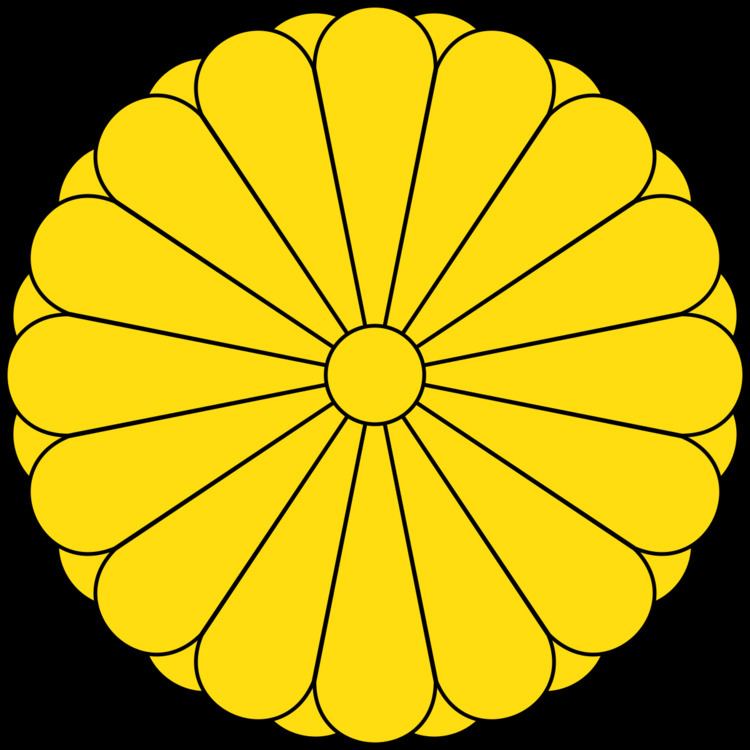Predecessor Shoko Died January 18, 1471 Successor Go-Tsuchimikado Children Emperor Go-Tsuchimikado | Name Emperor Go-Hanazono Parents Niwata Yukiko, Gosuko-in Role Sovereign | |
 | ||
Grandparents Fushimi-no-miya Yoshihito-Shinno Similar People Emperor Jimmu, Kakuei Tanaka, Akihito, Hirohito, Princess Shikishi | ||
Grandchildren Emperor Go-Kashiwabara | ||
Emperor Go-Hanazono (後花園天皇, Go-Hanazono-tennō) (July 10, 1419 – January 18, 1471) was the 102nd emperor of Japan, according to the traditional order of succession. His reign spanned the years from 1428 through 1464.
Contents
This 15th-century sovereign was named after the 14th-century Emperor Hanazono and go- (後) translates as "later", and thus, he could be called the "Later Emperor Hanazono", or in some older sources, may be identified as "Hanazono, the second" or as "Hanazono II".
Genealogy
Before his ascension to the Chrysanthemum Throne, his personal name (unimina) was simply Hikohito-shinnō (彦仁親王).
He was the eldest son of Imperial Prince Fushimi-no-miya Sadafusa (伏見宮貞成親王) (1372–1456). His mother was Sachiko (幸子) (1390–1448), daughter of Niwata Tsuneari (庭田経有).
His father was the 3rd of the Fushimi-no-miya line and grandson of the Northern Pretender Emperor Sukō, making Go-Hanazono the great-grandson of Sukō and 3rd cousin to his predecessor, Emperor Shōkō. He was also the great-great-great grandson of Emperor Go-Fushimi. This is the second most remote relationship between an emperor and his successor after that between Emperor Go-Komatsu (both the sixth Northern Pretender and the 100th in the main line) and his predecessor in the official line, Emperor Go-Kameyama, who was his fourth cousin twice removed.
Issue
Events of Go-Hanazono's life
Because the previous emperor, Emperor Shōkō had no son, retired Emperor Go-Komatsu needed to secure the Jimyōin inheritance against the Daikakuji line, before Emperor Shōkō died, he adopted a son out of the Fushimi-no-miya house, who became Emperor Go-Hanazono after Shōkō's death.
Until former-Emperor Go-Komatsu died in 1433, Emperor Go-Hanazono held the title of formal head of the Daïri, the real power in the court was wielded by his uncle, who continued a practice known as cloistered rule. After this, Go-Hanazono enjoyed 30 years of direct imperial rule, until his abdication on August 21, 1464, when the conventional pattern of indirect government by cloistered emperors was again resumed.
Kugyō
Kugyō (公卿) is a collective term for the very few most powerful men attached to the court of the Emperor of Japan in pre-Meiji eras. Even during those years in which the court's actual influence outside the palace walls was minimal, the hierarchic organization persisted.
In general, this elite group included only three to four men at a time. These were hereditary courtiers whose experience and background would have brought them to the pinnacle of a life's career. During Go-Hanazono's reign, this apex of the Daijō-kan included:
Eras of Go-Hanazono's reign
The years of Go-Hanozono's reign are more specifically identified by more than one era name or nengō. Go-Hanazono's reign is almost unique because of its eight successive eras; and only the turbulent years of Emperor Go-Daigo's reign included as many eras.
